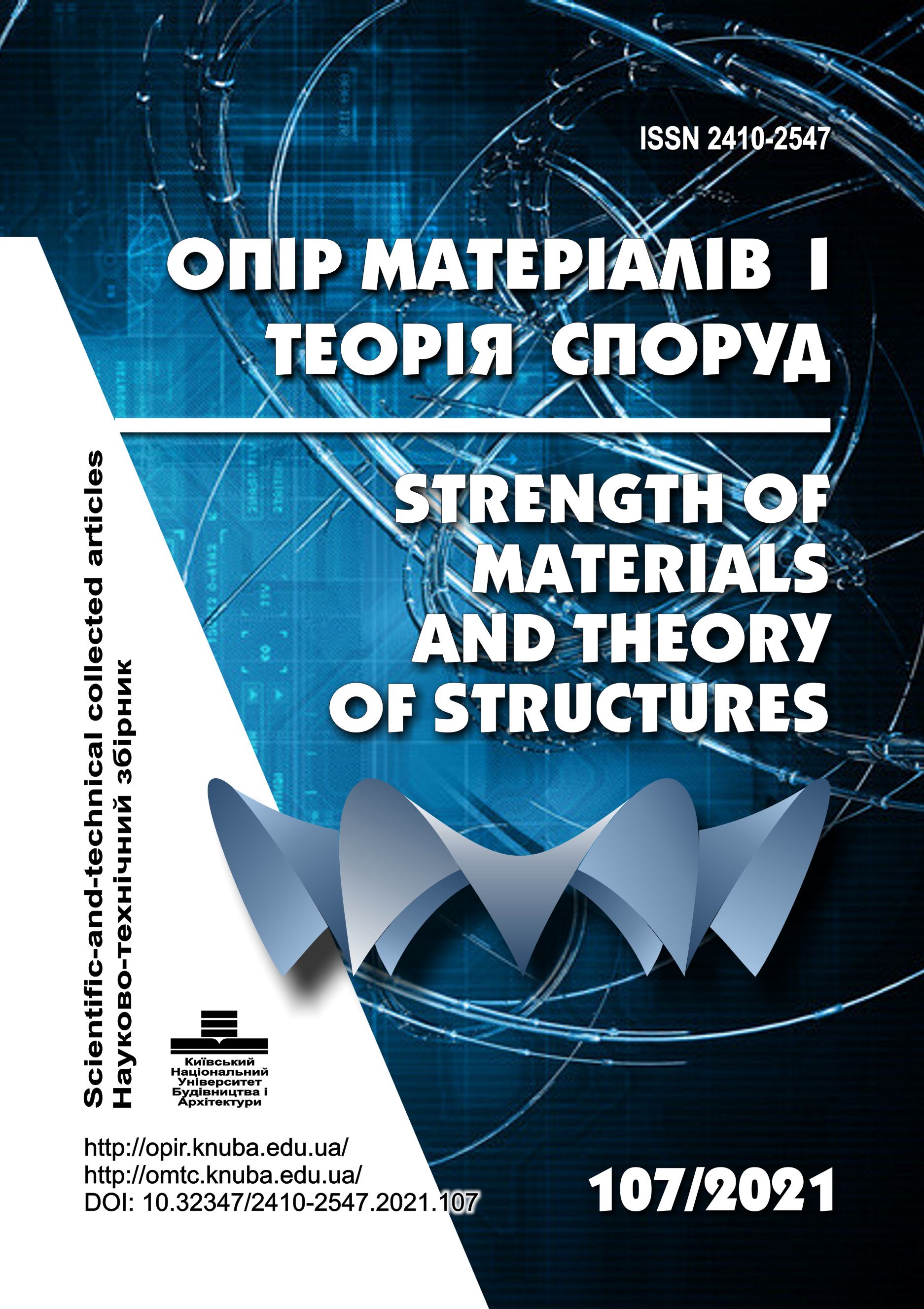Vibration monitoring of the state of preservation of historic buildings
DOI:
https://doi.org/10.32347/2410-2547.2021.107.120-132Keywords:
vibration, technical inspection, spectral analysis, architectural heritage, finite element methodAbstract
architectural monument. A technical inspection of the building was performed and existing defects were identified. The analysis of potential sources of dynamic influences on the building is carried out.
The technique of experimental researches is developed. The technique is based on a systems approach and involves the determination of dynamic parameters with the location of sensors directly on the individual elements of the studied structures. During the study, records of continuous fixation of the distribution of active oscillations of the structure were used.
Numerical values of oscillation frequencies at different external sources are obtained. The nature of the distribution of amplitude values of oscillations in structures testified to the integrity of the structure as a single dynamic system.
A comprehensive approach to solving the problem of modeling complex dynamical systems is considered.
A mathematical model of a fragment of structures has been developed. The elements of the model create a multilayer structure with variable elastic characteristics. The results of numerical studies of the behavior of structures, taking into account the presence of peeling plaster, indicate a significant increase in natural frequencies of oscillation (up to 10 times), taking into account the partial lack of adhesion between plaster and load-bearing structures. As a result of separation, the plaster begins to work as a separate element with its own frequency with which it can resonate with other vibrating sources.
The method of experimental-numerical analysis of the object is offered. This approach is based on the premise of determining the dynamic parameters of the interaction of subsystems with each other. The obtained numerical values of dynamic parameters will be used in further monitoring of the investigated building, on the basis of which it is possible to predict possible scenarios of behavior of structures over time.
The research results can be used in the restoration process for optimal fixing of plaster fragments and avoidance of resonant phenomena in operation on the basis of detailed local mathematical models.
References
Dr. Eng. Nader Jawad El Namara. Reconstruction and Restoration of Historic Buildings according to International Conventions (Gaza Strip as a Case Study) International Journal of Education and Research Vol. 1 No. 12 December 2013
Andrea Enrico del Grosso, Paolo Basso. Monitoring of Vibrations for the Protection of Architectural Heritage,7th European Workshop on Structural Health Monitoring July 8-11, 2014. La Cité, Nantes, France
Rabindra Adhikari , Pratyush Jha, Dipendra Gautam ,and Giovanni Fabbrocino. Seismic Strengthening of the Bagh Durbar Heritage Building in Kathmandu Following the Gorkha Earthquake Sequence. Buildings 2019, 9, 128
M.Sami Döndüren1, and Ozlem Sişik. Materials, used in historical buildings, analysis methods and solutions puroposals. E3S Web of Conferences 19, 03019 (2017)
Sayali Sandbhor, Rohan Botre. A SYSTEMATIC APPROACH TOWARDS RESTORATION OF HERITAGE BUILDINGS- A CASE STUDY. IJRET: International Journal of Research in Engineering and Technology ISSN: 2319-1163
Shota Urushadze, and Miroš Pirner. Analysis and evaluation of the effect of vibrations on historical buildings. MATEC Web of Conferences 313, 00020 (2020)
Nenad Šekularac 1, Jelena Ivanovi´c-Šekularac, Aleksandar Petrovski , Nikola Macut and Milan Radojevi´. Restoration of a Historic Building in Order to Improve Energy E_ciency and Energy Saving - Case Study -The Dining Room within the Žiˇca Monastery Property. Sustainability 2020, 12, 6271
Arne P. Johnson and W. Robert Hannen. Vibration Limits for Historic Buildings and Art Collections. APT BULLETIN JOURNAL OF PRESERVATION TECHNOLOGY / 46:2-3 2015
Georges Kouroussisa, Calogero Conti and Olivier Verlinden. Building vibrations induced by human activities: a benchmark of existing standards. Mechanics & Industry 15, 345–353 (2014)
ISO 4866. Механічна вібрація та ударна вібрація будівель, Настанови щодо вимірювання в будівництві.
Downloads
Published
Issue
Section
License
Copyright (c) 2022 Ігор Бєлов, Максим Вабіщевич, Олег Дєдов, Олег Скорук

This work is licensed under a Creative Commons Attribution 4.0 International License.
Authors retain copyright and grant the journal right of first publication with the work simultaneously licensed under a Creative Commons Attribution License that allows others to share the work with an acknowledgement of the work's authorship and initial publication in this journal.

